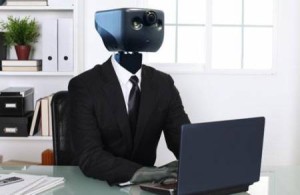A revolution in work and jobs coming
The Australian workplace will undergo a revolution in the next twenty years with automation and new digital technology changing the way people work and the jobs that will be available, according to a new report.
Australia’s science agency the CSIRO, which produced the report, says workplaces will be increasingly digitally focused and automated and that to benefit from this, we need a universal basic income, the slashing of working hours and a redefinition of ourselves without work.

A new report from the CSIRO says workplaces will be increasingly digitally focussed and automated
The report titled ‘Tomorrow’s Digitally Enabled Workforce’ identified six mega-trends in the workforce, the most important of which is an “explosion in device connectivity, data volumes and computing speed, combined with rapid advances in automated systems and artificial intelligence means that robotic devices can perform many tasks more quickly, safely and efficiently than humans”.
Increased automation will raise the complex nature of workers’ tasks, it said.
“Many low-skilled jobs are being offshored or automated. The consequence is the likelihood of a raised skills and education bar for entry into many professions and occupations,” the report said.
The report found science, technology, engineering and mathematics knowledge is used in three quarters of the fastest-growing occupations but warned that Australian youth “demonstrate falling interest and performance” in these.
Another trend is an anticipated rise in self-employment and freelancing caused by peer-to-peer platforms Upwork, Kaggle, Innoventive and Freelancer.com, which the report says “provide value through convenience, low barriers to entry and increased speed enabling people to transform their free time into paid work”.
The report said while freelancing had not yet taken hold in Australia, it was a large and growing employment model in other countries. It cited the US, where one in three workers is an independent contractor.
Launching the report last week Employment Minister Michaelia Cash said it showed that some jobs would inevitably become automated but technological change would improve others and also create new jobs and opportunities.
“The future won’t be about people competing with machines, it will be about people using machines and doing work that is more interesting and fulfilling,” she said.
The report said if the ideal job did not exist, the worker might need to create it.
“Entrepreneurial skills are likely to be increasingly important for small business founders and employees within large organisations,” it said.
The report predicted service industries, particularly education and healthcare, would continue to drive job creation, meaning “social interaction skills and emotional intelligence will become increasingly important”.
The report said Australia’s workforce will be diverse, with one in five Australians over the age of 65 in 2035, high female participation and a large proportion of migrants being of working age.
It said the employment trends would result in new job types, and speculated these might include “bigger big data analysts”, complex decision support analysts, remote-controlled vehicle operators, customer experience experts, personal preventative health helpers and online chaperones.
“The rise of un-crewed vehicles is giving rise to a new workforce of pilots, drivers and ship captains who do their jobs not from the sky, sea or mine site, but from an office in a remote location,” the report said.
It identified the main implications and new required skills for individuals and organisations planning for the future of a digitally enabled workforce.
These included: education and training; digital literacy; the importance of science, technology, engineering and maths; aptitudes and mindsets to handle a dynamic labour market; improving workforce participation in vulnerable demographics; and, new models to forecast job transition requirements.
A recent separate CEDA report showed 5 million jobs, or 40 per cent of the Australian workforce, faced a high probability of being replaced by computers over the next 10 to 15 years.
Another international report into the future of work by consultants PwC surveyed 10,000 people in China, India, Germany, the UK and US finding 66 per cent were positive about future work opportunities.
It found 53 per cent of people believed technology breakthroughs would be the biggest driver of change in the way people work, 39 per cent said it would be resource scarcity and climate change and 36 per cent cited shifts in global economic power.
Laurie Nowell
AMES Australia Senior Journalist












